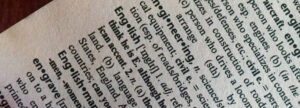WHAT’S THE DIFFERENCE BETWEEN LINE EDITING AND COPYEDITING?
Line editing and copyediting overlap somewhat, and line editors often catch mechanical errors in passing. Yet these two types of editing are meaningfully different. Consider these examples:
Original sentences: Another tourist attraction in Hamburg is the opportunity to eat a Sunday morning breakfast consisting of a fish sandwich and coffee. Its literally a must at the Fishmarkt (fish market) in this port on the North Sea.
A line editor’s first concern would be to trim and power up these sentences, starting by replacing is with an active verb. One possible first opening: On Sunday mornings, tourists in Hamburg can breakfast on a fish sandwich and coffee. Other stylistic changes would surely include omitting the word literally, which adds nothing to the meaning. A line editor might also point out that, although Hamburg is a port, it’s not on the North Sea but rather connected to the North Sea by the Elbe River.
A copyeditor would zoom in on Its (correctly: It’s) and fix the spelling of Fischmarkt.
Original sentences: The drips in my new series are done by flinging paint using brushes or a stick. Like the canvasses of Jackson Pollack they convey the affect of a pulsating sky.
A line editor would tackle that verb “to do” in the passive voice (are done). The doer is missing, and that sentence falls flat. A livelier description might rework that statement using the phrase I fling paint.
A copyeditor would correct the spelling (canvases, not canvasses; Pollock, not Pollack; effect, not affect) and add a comma after Pollock.
Both a line editor and a copyeditor would align the artist’s two methods of getting paint to canvas by choosing either singular (using a brush or a stick) or plural (using brushes or sticks).
